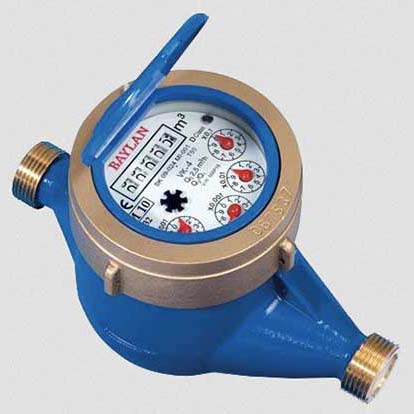Finding Water Supply Leaks
Excessive water Usage and Leaks in Your Water Supply
Are you using a lot of water? Do you have a leak in your water supply?
You can use a lot of water very quickly with only a small leak and, if you have a water meter, this can cost you a lot of money.
Here we discuss how to tell if you have a leak, what might cause the leak and how to find it.

High Water Usage - A case Study
Some years ago I was asked to assist a man with very high water bills, he was paying around $1,000 per month for his villa. That is a lot of water. From the bill we worked out he had been using 2,000 litres of water an hour, even with a five bedroom villa and lots of guests that is a lot of water. Just as a point of information world health standards say that a person needs a minimum of around 13 litres of water per day.
Looking at the water meter it was immediately clear that there was something seriously wrong, the meter was turning very fast when normally they rotate at a leisurely pace.
While most people around the world have wells or bores and pumps to provide water to their houses there are reticulated “town“ water supplies in many city areas provided by government or private water companies. If you have a town supply you will have a water meter. Your water meter, if you have one, records cubic metres of water used and, of course, one cubic metre is 1,000 litres. You are charged per cubic metre.
Finding the Leak
The starting point is to check the obvious things, see if there are any broken pipes, leaking toilets or running taps.
We then started looking for obvious pools of water or wet patches on the ground.
We looked around in the undergrowth and, hidden outside the boundary wall under a beautiful green tree and some rather thriving lush vegetation, was a large pool of water. The septic tank was full and overflowing and an outside drain had a healthy flow going into it. It appeared that the villa had been irrigating the whole district for quite some time.
This told us that somewhere in the water pipes there must be a serious leak. But why was the pool of water outside the property? Water can travel underground and emerge well away from the actual leak, this can make it tricky to find the fault.
We then asked to see if there were any drawings to indicate where the water pipes had been laid but unfortunately, as is usually the case, no drawings were available.
Construction MEP (Mechanical, Electrical and Plumbing) Drawings
If ever you have a building built or you buy a new house always insist that you get copies of the drawings, particularly the drawings of the electrical layout and the services (water, sewerage, drainage, etc.) In the highly likely event that you will have a problem in the future it can save a lot of time and trouble knowing where things are.
Next came some detective work. Using our experience of building construction we worked out the most likely places that the pipes would have been run. From this we identified the most likely place the leak would be.
The Cause of the Problem
We dug and eventually the pipe was revealed with a hiss and a jet of water. A little further digging and we found the cause of the problem - a two inch plastic pipe and a joint had come apart. The pipe had not been glued properly. Five more minutes and the pipe was repaired.
Pipe Joints Not Properly Glued
Plastic PVC pipe joints often come apart. Plumbers tend to cut and assemble pipework before they finally glue it together. They then go back and glue all the joints, if they miss disassembling and gluing one joint you have a problem and, with a tendency to bury plastic pipes in concrete walls and under floors, this can be a serious issue.
Small Leaks Can Lose A Lot Of Water
It is surprising how much water can run from a fairly small leak. Let us say your toilet is running or a tap is dripping and you are losing a cupful every ten seconds, that is three litres a minute which is 134,000 litres a month - that is a lot of water.
So what steps can we take?
- Make sure you get layout plans of the services in your new house.
- Ask your friendly builder to think of maintenance when deciding where to put pipes and wiring.
- Check your water meter to make sure it stops turning when everything is turned off.
- Make sure none of you taps or toilets are running.
- Do not search for a water pipe with sharp digging tools.
Keep Sewerage pipework separate from drainage
It should be noted that septic systems and drainage should be totally isolated from each other to prevent raw sewerage getting into open drains.
Pressure Variation in Reticulated Water Supply Systems
As a final comment if you are considering using the town water supply for your new home be aware that the water pressure can vary enormously through the day, I have a friend who has such high town water pressure it blows the pipes off the taps at night but in the morning when everyone is having a shower there is no pressure at all.
Phil Wilson
Copyright © Phil Wilson October 2007
This article, or any part of it, cannot be copied or reproduced without permission from the copyright owner.
